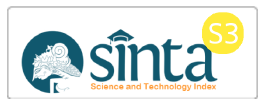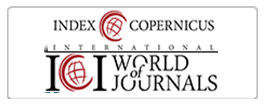Tata Kelola Perusahaan Dalam Mengurangi Kecurangan Laporan Keuangan (Systematic Literature Review Dengan Metode Meta Sintesis)
DOI:
https://doi.org/10.22219/jaa.v5i3.21248Keywords:
Corporate Governance, Financial Statement Fraud, Meta-Aggregation, Meta-Synthesis, Systematic Literature ReviewAbstract
Financial statement fraud is an opportunistic behavior of agents that misleads the principal due to information asymmetry. Principals take advantage of corporate governance to overcome this. Corporate governance is supervisory mechanisms carried out by principals against agents that aim to reduce information asymmetry. This study aims to identify the corporate governance structure and understand the role of corporate governance in reducing the potential for fraudulent financial statements. This research is a systematic literature review with a meta-synthesis method using a meta-aggregation approach. We identify six components of the corporate governance structure: the government, investors, the board of directors, management, whistleblowing systems, and auditors. Our research has not found the role of any of the components that can effectively reduce the potential for fraudulent financial statements. These components need to collaborate and synergize regarding reducing fraudulent financial statements. Our research also identifies several factors that can influence corporate governance
Downloads
References
Abri, A. F., Arumugam, D., & Balasingam, S. (2019). Impact of the Corporate Governance on the Financial Statement Fraud: A Study Focused on Companies in Tanzania. International Journal of Recent Technology and Engineering, 7(5S), 346–351. https://www.ijrte.org/wp-content/uploads/papers/v7i5s/ES2163017519.pdf
ACFE. (2020a). Report to The Nations: 2020 Global Study on Occupational Fraud and Abuse. https://acfepublic.s3-us-west-2.amazonaws.com/2020-Report-to-the-Nations.pdf
ACFE. (2020b). Report to The Nations: 2020 Global Study on Occupational Fraud and Abuse (Asia-Pacific Edition). https://www.acfe.com/report-to-the-nations/2020/docs/RTTN-AsiaPac.pdf
Akbar, C. (2020). Ada Kasus Rekayasa Laporan Keuangan Jiwasraya, IAPI Sarankan Ini. In Tempo. https://bisnis.tempo.co/read/1294697/ada-kasus-rekayasa-laporan-keuangan-jiwasraya-iapi-sarankan-ini
Awang, Y., & Ismail, S. (2018). Determinants of Financial Reporting Fraud Intention Among Accounting Practitioners in the Banking Sector. International Journal of Ethics and Systems, 34(1), 32–54. https://doi.org/10.1108/IJOES-05-2017-0080
Chahine, S., Fang, Y., Hasan, I., & Mazboudi, M. (2021). CEO Network Centrality and the Likelihood of Financial Reporting Fraud. Abacus, 57(4), 654–678. https://doi.org/10.1111/abac.12219
Dorris, B. (2020). Coronavirus Pandemic Is a Perfect Storm for Fraud. Association of Certified Fraud Examiners. https://www.acfe.com/press-release.aspx?id=4295010491
Drisko, J. W. (2020). Qualitative Research Synthesis: An Appreciative and Critical Introduction. Qualitative Social Work, 19(4), 736–753. https://doi.org/10.1177/1473325019848808
Fernando, A. C., Muraleedharan, K. P., & Satheesh, E. K. (2017). Corporate Governance: Principles, Policies and Practices (3rd ed.). Pearson.
Fitriyani, & Noviyanti, S. (2021). Pengaruh Ukuran Perusahaan, Kualitas, Dan Independensi Komite Audit Terhadap Kecurangan Pelaporan Keuangan Pada Perusahaan BEI. COSTING : Journal of Economic, Business and Accounting, 5(1), 738–754. https://doi.org/10.31539/COSTING.V5I1.2288
Ghozali, I. (2020). 25 Teori Besar (Grand Theory) Ilmu Manajemen, Akuntansi, dan Bisnis. Yoga Pratama.
Handoko, B. L., & Natasya. (2019). Fraud Diamond Model for Fraudulent Financial Statement Detection. International Journal of Recent Technology and Engineering (IJRTE), 8(3), 6865–6872. https://doi.org/10.35940/ijrte.C5838.098319
IAASB. (2020). Handbook of International Quality Control, Auditing, Review, Other Assurance, and Related Services Pronouncement (2020th ed., Vol. 1). https://www.ifac.org/system/files/publications/files/IAASB-2020-Handbook-Volume-1.pdf
Jensen, M. C., & Meckling, W. H. (1976). Theory of the Firm: Managerial Behavior, Agency Costs and Ownership Structure. Journal of Financial Economics, 3(4), 305–360. https://doi.org/10.1016/0304-405X(76)90026-X
Kouaib, A., & Almulhim, A. (2019). Earnings Manipulations and Board’s Diversity: The Moderating Role of Audit. The Journal of High Technology Management Research, 30(2), 100356. https://www.sciencedirect.com/science/article/pii/S1047831019300185
Kusumawati, E., Yuliantoro, I. P., & Putri, E. (2021). Pentagon Fraud Analysis in Detecting Fraudulent Financial Reporting. Riset Akuntansi Dan Keuangan Indonesia, 6(1), 78–93. https://doi.org/10.23917/REAKSI.V6I1.14646
Larcker, D., & Tayan, B. (2016). Corporate Governance Matters: A Closer Look at Organizational Choices and Their Consequences (2nd ed.). Pearson Education.
Li, X., & Li, Y. (2020). Female independent directors and financial irregularities in chinese listed firms: From the perspective of audit committee chairpersons. Finance Research Letters, 32, 101320. https://doi.org/10.1016/j.frl.2019.101320
Liao, J., Smith, D., & Liu, X. (2019). Female CFOs and Accounting Fraud: Evidence from China. Pacific-Basin Finance Journal, 53, 449–463. https://www.sciencedirect.com/science/article/pii/S0927538X18304475
Lin, F., Wu, C.-M., Fang, T.-Y., & Wun, J.-C. (2014). The Relations among Accounting Conservatism, Institutional Investors and Earnings Manipulation. Economic Modelling, 37, 164–174. https://doi.org/10.1016/j.econmod.2013.10.020
Lisic, L. L., Silveri, S. (Dino), Song, Y., & Wang, K. (2015). Accounting Fraud, Auditing, and the Role of Government Sanctions in China. Journal of Business Research, 68(6), 1186–1195. https://doi.org/10.1016/j.jbusres.2014.11.013
Maharani, & Mahmudah, H. (2021). Pengaruh Bystander Effect, Whistleblowing, dan Perilaku Etis Terhadap Financial Statement Fraud. Paradigma, 18(2), 24–31. https://doi.org/10.33558/paradigma.v18i2.2926
Maisaroh, P., & Nurhidayati, M. (2021). Pengaruh Komite Audit, Good Corporate Governance dan Whistleblowing System terhadap Fraud Bank Umum Syariah di Indonesia Periode 2016-2019. Etihad: Journal of Islamic Banking and Finance, 1(1), 23–36. https://doi.org/10.21154/etihad.v1i1.2752
Martins, O. S., & Junior, R. V. (2020). The Influence of Corporate Governance on the Mitigation of Fraudulent Financial Reporting. Revista Brasileira de Gestão de Negócios, 22(1), 65–84. https://www.proquest.com/scholarly-journals/influence-corporate-governance-on-mitigation/docview/2345781867/se-2
Mokoaleli-Mokoteli, T., & Iatridis, G. E. (2017). Big 4 Auditing Companies, Earnings Manipulation and Earnings Conservatism: Evidence from an Emerging Market. Investment Management & Financial Innovations, 14(1), 35–45. https://www.proquest.com/scholarly-journals/big-4-auditing-companies-earnings-manipulation/docview/2221306192/se-2
Montesdeoca, M. R., & Medina, A. J. S. (2019). Research Topics in Accounting Fraud in the 21st Century: A State of the Art. Sustainability, 11(6), 1570. https://doi.org/10.3390/su11061570
Mulyadianto, A., Kirana, D. J., & Wijayanti, A. (2020). Kontribusi Corporate Governance Dalam Mengurangi Kecurangan Laporan Keuangan. Jurnal Ilmiah Akuntansi Kesatuan, 8(3), 297–308. https://doi.org/10.37641/jiakes.v8i3.369
Nasir, N. A. B. M., Ali, M. J., & Ahmed, K. (2019). Corporate Governance, Board Ethnicity and Financial Statement Fraud: Evidence from Malaysia. Accounting Research Journal, 32(3), 514–531. https://doi.org/10.1108/ARJ-02-2018-0024
Nasir, N. A. B. M., & Hashim, H. A. (2021). Corporate Governance Performance and Financial Statement Fraud: Evidence from Malaysia. Journal of Financial Crime, 28(3), 797–809. https://doi.org/10.1108/JFC-09-2020-0182
Noble, M. R. (2019). Fraud Diamond Analysis in Detecting Financial Statement Fraud. The Indonesian Accounting Review, 9(2), 121–132. https://doi.org/10.14414/tiar.v9i2.1632
OECD. (2015). G20/OECD Principles of Corporate Governance 2015. OECD Publishing. https://doi.org/10.1787/9789264236882-en
Okoli, C. (2015). A Guide to Conducting a Standalone Systematic Literature Review. Communications of the Association for Information Systems, 37(1), 879–910. https://doi.org/10.17705/1CAIS.03743
Petrou, A. P., & Procopiou, A. (2016). CEO Shareholdings and Earnings Manipulation: A Behavioral Explanation. European Management Review, 13(2), 137–148. https://doi.org/10.1111/emre.12073
Prawitt, D. F., Sharp, N. Y., & Wood, D. A. (2012). Internal Audit Outsourcing and the Risk of Misleading or Fraudulent Financial Reporting: Did Sarbanes-Oxley Get It Wrong? Contemporary Accounting Research, 29(4), 1109–1136. https://doi.org/10.1111/j.1911-3846.2012.01141.x
Rahman, A. A. A. A., & Al-Dhaimesh, O. H. A. (2018). The Effect of Applying COSO-ERM Model on Reducing Fraudulent Financial Reporting of Commercial Banks in Jordan. Banks and Bank Systems, 13(2), 107–115. https://www.proquest.com/scholarly-journals/effect-applying-coso-erm-model-on-reducing/docview/2221320395/se-2
Ramadan, G. R., Prasetyo, O. F., Mujaddid, A., Masyudi, A. R., Mahdi, R. A., Junior, K. L., & Putra, Z. . (2021). Board Of Directors Gender Diversity And Real Earnings Management: Does Female Board Of Director Matter? Jurnal Reviu Akuntansi Dan Keuangan, 11(2), 306–320. https://doi.org/10.22219/jrak.v11i2.15915
Rezaee, Z. (2018). Corporate Governance in the Aftermath of the Global Financial Crisis, Volume IV: Emerging Issues in Corporate Governance (1st ed.). Business Expert Press.
Rezaee, Z. (2019). Forensic Accounting and Financial Statement Fraud, Volume II: Forensic Accounting Performance (1st ed.). Business Expert Press.
Rostami, V., & Rezaei, L. (2021). Corporate Governance and Fraudulent Financial Reporting. Journal of Financial Crime, ahead-of-print(ahead-of-print). https://doi.org/10.1108/JFC-07-2021-0160
Shayan-Nia, M., Sinnadurai, P., Mohd-Sanusi, Z., & Hermawan, A.-Ni. A. (2017). How Efficient Ownership Structure Monitors Income Manipulation? Evidence of Real Earnings Management among Malaysian Firms. Research in International Business and Finance, 41, 54–66. https://www.sciencedirect.com/science/article/pii/S0275531916303440
Shonhadji, N., & Maulidi, A. (2021). The Roles of Whistleblowing System and Fraud Awareness as Financial Statement Fraud Deterrent. International Journal of Ethics and Systems, 37(3), 370–389. https://doi.org/10.1108/IJOES-09-2020-0140
Sial, M. S., Vo, X. V., Al-Haddad, L., & Trang, T. N. (2019). Impact of Female Directors on the Board and Foreign Institutional Investors on Earning Manipulation of Chinese Listed Companies. Asia-Pacific Journal of Business Administration, 11(3), 288–300. https://doi.org/10.1108/APJBA-10-2018-0189
Smaili, N., Arroyo, P., & Issa, F. A. (2021). The Dark Side of Blockholder Control: Evidence from Financial Statement Fraud Cases. Journal of Financial Crime, ahead-of-print(ahead-of-print). https://doi.org/10.1108/JFC-05-2021-0113
Sugianto, D. (2019). Diduga Manipulasi Laporan Keuangan, Citra Garuda Bisa Tercoreng. In Detik Finance. https://finance.detik.com/bursa-dan-valas/d-4524853/diduga-manipulasi-laporan-keuangan-citra-garuda-bisa-tercoreng
Sun, J., Kent, P., Qi, B., & Wang, J. (2019). Chief Financial Officer Demographic Characteristics and Fraudulent Financial Reporting in China. Accounting & Finance, 59(4), 2705–2734. https://doi.org/10.1111/acfi.12286
Supriyanto, & Hendri, J. (2021). Analisis Pengaruh Tata Kelola Perusahaan dan Struktur Modal Terhadap Kinerja Perseroan. Jurnal Akademi Akuntansi, 4(2), 246–269. https://doi.org/10.22219/jaa.v4i2.18181
Syafina, D. C. (2020). Lika-Liku Bisnis Hanson International, Biang Keladi Kasus Jiwasraya. In Tirto. https://tirto.id/lika-liku-bisnis-hanson-international-biang-keladi-kasus-jiwasraya-esPm
Tutino, M., & Merlo, M. (2019). Accounting Fraud: A Literature Review. Risk Governance and Control: Financial Markets and Institutions, 9(1), 8–25. https://doi.org/10.22495/rgcv9i1p1
Tyastiari, N. M. O., Yuniarta, G. A., & Wahyuni, M. A. (2018). Pengaruh Bystander Effect, Whistleblowing dan Perilaku Etis Terhadap Financial Statement Fraud ( Studi Empiris Pada Kasus Fraud Pegawai Negeri Sipil Pemerintah kabupaten Gianyar). JIMAT (Jurnal Ilmiah Mahasiswa Akuntansi) Undiksha, 8(2), 1–10. https://doi.org/10.23887/JIMAT.V8I2.13189
Uwuigbe, O. R., Olorunshe, O., Uwuigbe, O. R., Olorunshe, O., Uwuigbe, U., Ozordi, E., Asiriuwa, O., Asaolu, T., & Erin, O. (2019). Corporate Governance and Financial Statement Fraud among Listed Firms in Nigeria. 331(1), 12055. https://www.proquest.com/scholarly-journals/corporate-governance-financial-statement-fraud/docview/2557911856/se-2
Wahyuningtyas, E. T. (2021). The Incidence of Accounting Fraud is Increasing: Is It a Matter of the Gender of Chief Financial Officers? Journal of Financial Crime, ahead-of-print(ahead-of-print). https://doi.org/10.1108/JFC-10-2021-0230
Wang, Y., Ashton, J. K., & Jaafar, A. (2019). Does Mutual Fund Investment Influence Accounting Fraud? Emerging Markets Review, 38, 142–158. https://doi.org/10.1016/j.ememar.2018.12.005
Wells, J. T. (2018). International Fraud Handbook. John Wiley & Sons.
Widodo, A., & Syafruddin, M. (2017). Pengaruh Pengungkapan Struktur Corporate Governance Terhadap Kecurangan Laporan Keuangan. Diponegoro Journal of Accounting, 6(4), 1–10. https://ejournal3.undip.ac.id/index.php/accounting/article/view/18198/17279
Wu, M.-C., Huang, Y.-T., & Chen, Y.-J. (2012). Earnings Manipulation, Corporate Governance and Executive Stock Option Grants: Evidence from Taiwan. Asia-Pacific Journal of Financial Studies, 41(3), 241–257. https://doi.org/10.1111/j.2041-6156.2012.01072.x
Yesiariani, M., & Rahayu, I. (2017). Deteksi Financial Statement Fraud: Pengujian Dengan Fraud Diamond. Jurnal Akuntansi Dan Auditing Indonesia, 21(1), 49–60. https://doi.org/https://doi.org/10.20885/jaai.vol21.iss1.art5
Downloads
Published
Issue
Section
License
Copyright (c) 2022 Andreas Tanjaya, Febrian Kwarto

This work is licensed under a Creative Commons Attribution-NonCommercial-ShareAlike 4.0 International License.
Jurnal Akademi Akuntansi is licensed under a Creative Commons Attribution-NonCommercial-ShareAlike 4.0 International License.
Authors who publish with this journal agree to the following terms:
- Authors retain copyright and grant the journal right of first publication with the work simultaneously licensed under a Creative Commons Attribution-NonCommercial-ShareAlike 4.0 International License that allows others to share the work with an acknowledgment of the work's authorship and initial publication in this journal.
- Authors are able to enter into separate, additional contractual arrangements for the non-exclusive distribution of the journal's published version of the work (e.g., post it to an institutional repository or publish it in a book), with an acknowledgment of its initial publication in this journal.
- Authors are permitted and encouraged to post their work online (e.g., in institutional repositories or on their website) prior to and during the submission process, as it can lead to productive exchanges, as well as earlier and greater citation of published work (See The Effect of Open Access).
Jurnal Akademi Akuntansi dilisensikan di bawah lisensi Creative Commons Attribution-NonCommercial-ShareAlike 4.0 International.
Penulis yang menerbitkan artikel di jurnal ini menyetujui ketentuan berikut:
- Penulis mempertahankan hak cipta dan memberikan hak jurnal atas publikasi pertama dengan karya yang secara serentak dilisensikan di bawah Lisensi Pengaitan Creative Commons yang memungkinkan orang lain untuk berbagi karya dengan pengakuan atas karya penulis dan publikasi awal dalam jurnal ini.
- Penulis dapat masuk ke dalam pengaturan kontrak tambahan yang terpisah untuk distribusi non-eksklusif versi karya jurnal yang diterbitkan (misalnya, mempostingnya ke repositori institusional atau mempublikasikannya dalam sebuah buku), dengan pengakuan publikasi awalnya di jurnal ini.
- Penulis diizinkan dan didorong untuk memposting pekerjaan mereka secara online (misalnya, di repositori institusional atau di situs web mereka) sebelum dan selama proses pengajuan, karena dapat mengarah pada pertukaran produktif, serta kutipan pekerjaan sebelumnya dan yang lebih besar (Lihat Pengaruh Akses Terbuka).
























